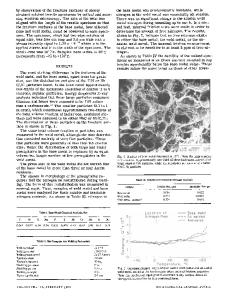Formability of stainless steel
- PDF / 1,153,309 Bytes
- 12 Pages / 612 x 792 pts (letter) Page_size
- 39 Downloads / 398 Views
I.
INTRODUCTION
The ability to form sheet metal (‘‘formability’’) is controlled by the material resistance to strain localization and fracture and the ability to distribute strain over an arbitrary tool surface. Thus, formability represents a complex interaction of mechanical properties, surface properties and configuration, and applied rates and temperatures.[1] Standard mechanical properties along a single proportional path may be obtained by tensile testing,[2–7] planestrain testing,[8–11] balance-biaxial testing[12–16] or other such tests. These results are useful for estimating general plasticity laws,[8–18] although the strain paths encountered in real forming operations may differ significantly from proportional. Such plasticity laws may be used in conjunction with results from friction tests approximating sheet forming conditions[19–24] and appropriate numerical procedures[25–33] to simulate forming operations, thus providing useful predictions of strain distributions.[34,35] Usually, such simulations do not incorporate complex boundary and material conditions such as deformation-induced heating[36–40] or variable friction.[41–44] Strain distributions can equally be obtained experimentally, using real tools and materials, with a technique such as circle-grid analysis.[45,46,47] The limit to forming is usually determined from such strain distributions (experimental or simulated) by comparing them with forming-limit diagrams (FLDs).[45–57] The FLDs represent a locus of strains at the onset of localization, typically generated from spherical-punch tests[58,59,60] carried out with various blank configurations and friction conditions to produce a range of strain states and strain paths corresponding, approximately, to industrial ones. Simulative tests, such as the Erichsen/Olson cup test,[61] V. TALYAN, formerly Graduate Research Associate, Department of Materials Science and Engineering, The Ohio State University, is Software Engineer, LCI International, Dublin, OH 43016. R.H. WAGONER, Professor, Department of Materials Science and Engineering, and J.K. LEE, Professor, Department of Aeronautical Engineering, Applied Mechanics, and Aviation, are with The Ohio State University, Columbus, OH 43210. Manuscript submitted November 11, 1997. METALLURGICAL AND MATERIALS TRANSACTIONS A
the limiting dome height (LDH)[62,63] test, Ohio State University or the formability test[64,65,66] can be used to evaluate the accuracy of numerical simulations[35] or to estimate formability under conditions approximating those found in forming operations.[45,47,48,53] These conditions include edge restraint (as from the drawbeads or binder pressure), friction and lubrication, changing strain paths, and, possibly, changes in strain rate, temperature, and so on. Analysis of forming operations is, thus, complex and partially based on an established base of data and experience with the particular material, the forming operation, and the various test results. The knowledge base for plain carbon steels is well established, following more
Data Loading...











